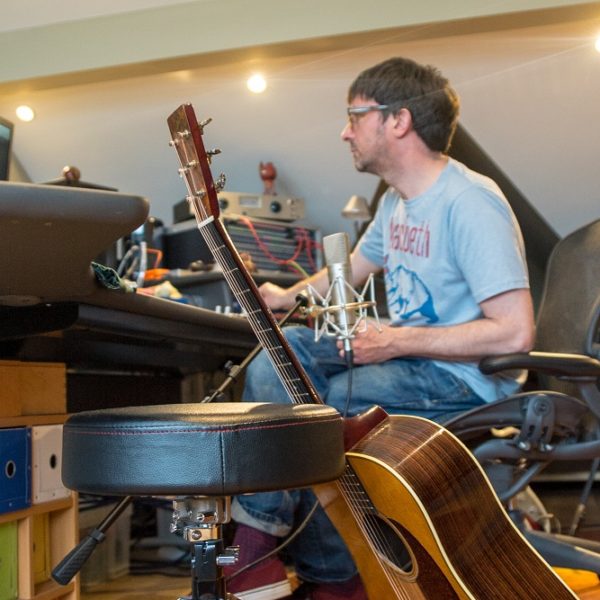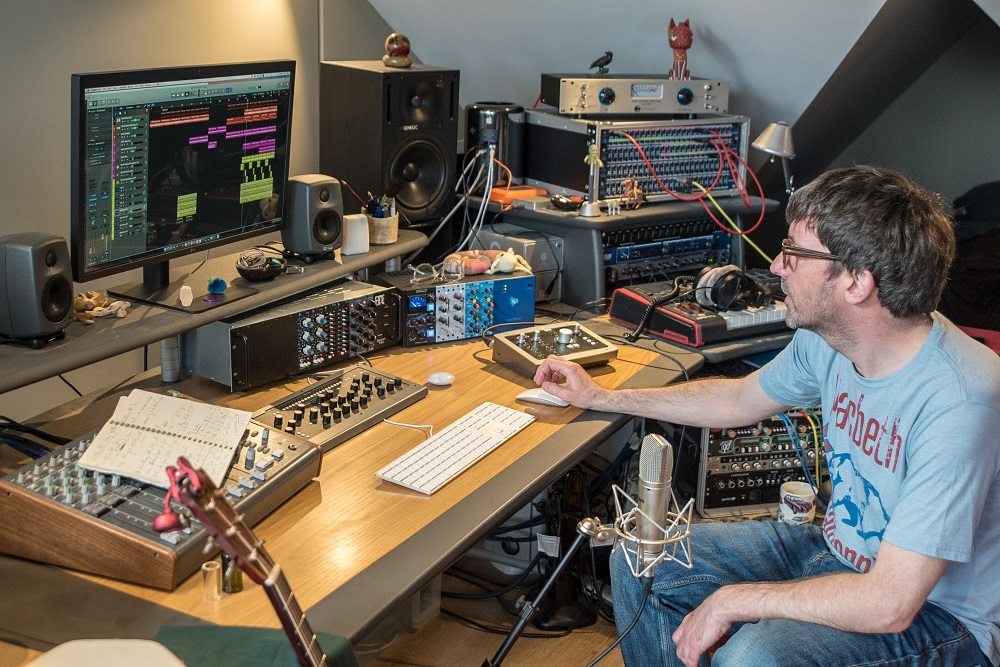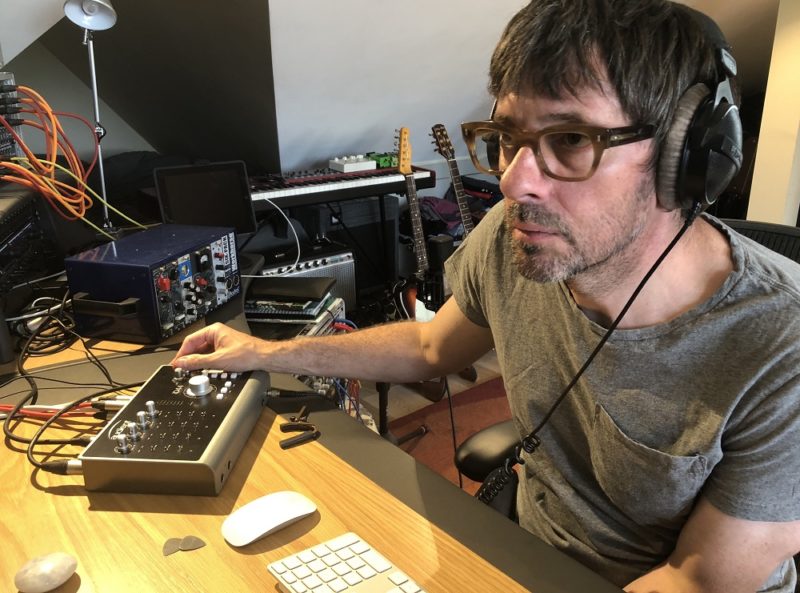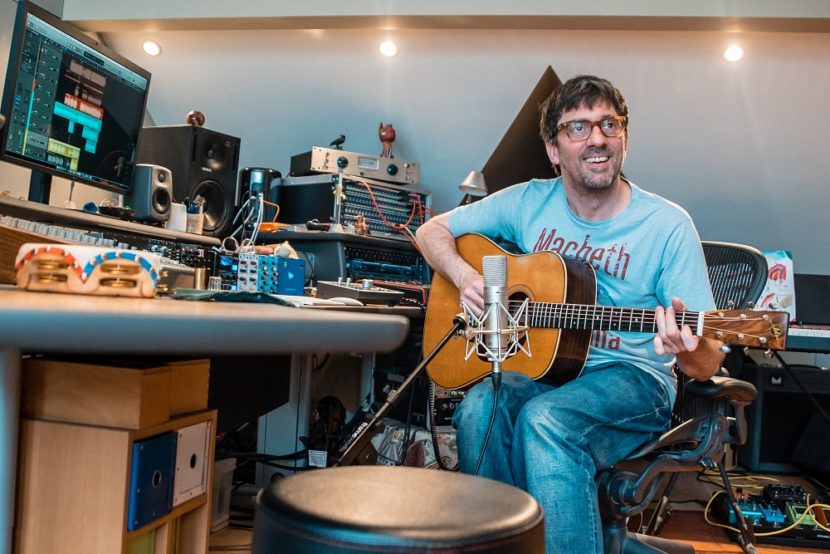Blur guitarist and solo artist Graham Coxon treasures his home studio, a reasonably sized space flooded with light located at the top of his north London home. “It was going to be my creative space,” he says to Audient. “It started off as just a table with an interface on it – and a computer.” The plan was to have somewhere he could paint, keep his vast tweed jacket collection and express himself through whatever medium he saw fit. “Then the audio side of it expanded a bit more,” he says, smiling at his understatement.
“It started off as just a table with an interface on it – and a computer.”
Owner of an iD22 audio interface and the eight-channel mic pre ASP800 from Audient, along with a selection of speakers and an eclectic mix of second hand kit found on eBay, he confirms that he has made sure that he’s got enough channels and the right gear “…to record things cleanly or to muddy things up,” whilst at the same time being able to experiment with any one of his many acoustic guitars. “I haven’t gone really crazy on audio gear, I don’t think,” he says, smiling at his understatement.
It was in this very studio that Graham penned the soundtrack to the eight-part Netflix series The End of the F***ing World – just one of the many projects that has benefitted from the fact that the studio “…is so close to where I wake up.” Indeed, this is what Graham finds particularly important: to be able to grasp inspiration as it strikes. “Having a place like this in your house means that you can constantly write,” he says. “Any idea I have, I can be up here really quickly and recording it.”
“Spontaneous ideas aren’t ever wasted”
 With such a high standard of gear on hand – including his brand new iD44 audio interface which has literally just arrived – each of these flashes of inspiration won’t need to be re-recorded in a professional studio, either. “Whatever you write and record, if you’re going to make an album or single […] it can be part of the real thing.”
With such a high standard of gear on hand – including his brand new iD44 audio interface which has literally just arrived – each of these flashes of inspiration won’t need to be re-recorded in a professional studio, either. “Whatever you write and record, if you’re going to make an album or single […] it can be part of the real thing.”
Should he need to leave the house, there are elements of the studio he can take with him. Indicating his iD22, he describes it as “…easy to rig up. It can be used in conjunction with the ASP800, which is part of a mobile rack I’ve got together of ‘bits and bobs’ so I can easily record drums. I can just grab that, chuck it in the car and zoom down to my drum recording space – obviously I can’t do it here. That’s incredibly handy – very, very mobile.
“Whenever I leave London, [iD22] goes with me. It’s just dead easy. I have speakers set up wherever I’m going, just plug them in the back and then you’re off!”
Audient ASP800 & iD22: “incredibly handy – very, very mobile”
Which means he’s always poised to capture his creativity. “Spontaneous ideas aren’t ever wasted. They can sound as fresh and exciting as when they happened – whether they’re accidental or if you’ve really worked them out,” he muses. “That’s what I like about recording: these moments of inspiration, they just stay there. Suspended in a song forever.”
 Graham Coxon very much at home in his home studio
Graham Coxon very much at home in his home studio
Watch the whole video of Graham chatting about his home studio here and find out more about how he went about scoring The End Of The F***ing World here.


